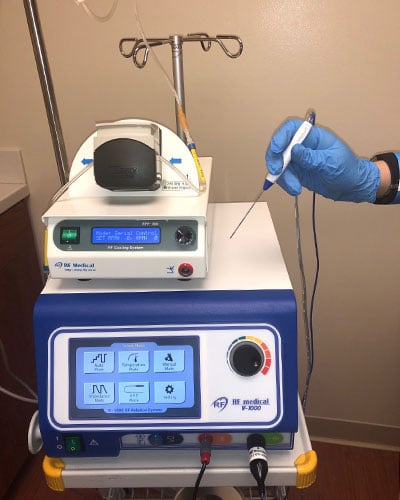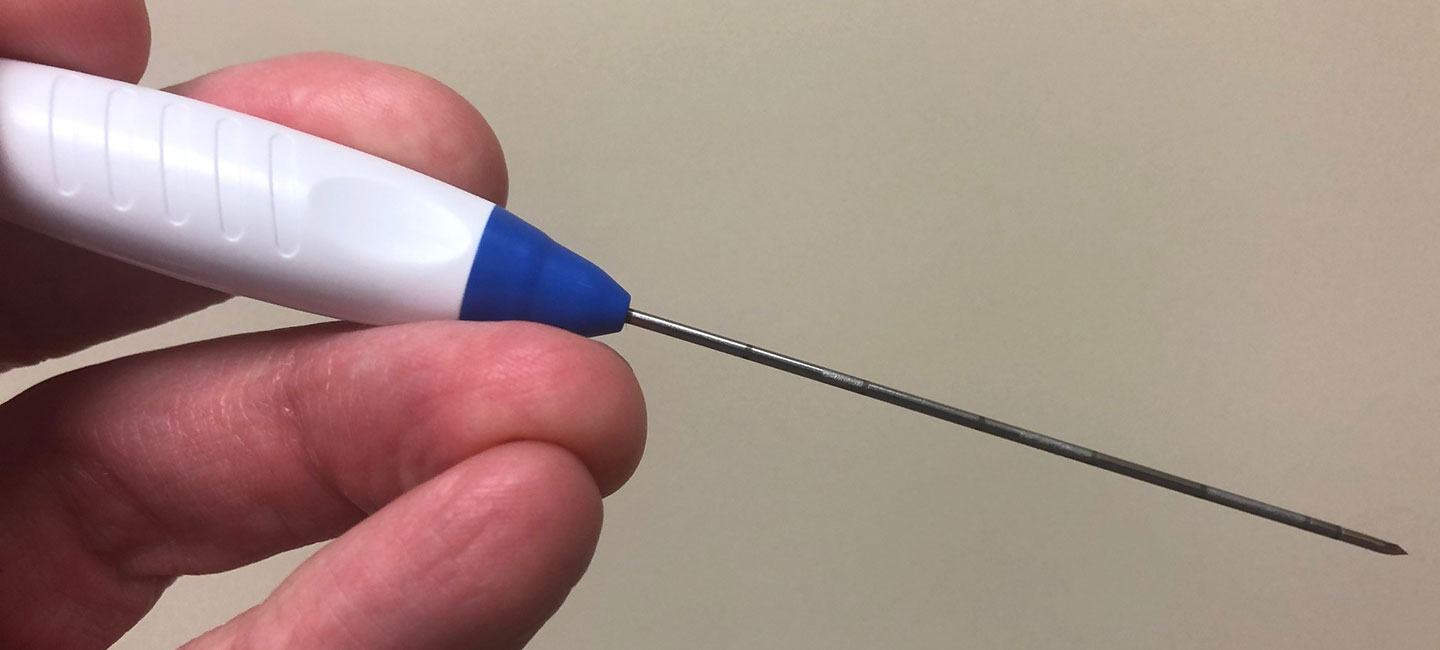New Procedure Offers Less Invasive Treatment for Thyroid Nodules
Thyroid nodules are very common, occurring in more than half the population as individuals age. For malignant thyroid nodules, patients can undergo partial or total surgical thyroid removal followed by radioiodine treatment when necessary
But what about benign tumors? Although not cancerous, a benign thyroid nodule can cause a noticeable lump in the throat or problematic symptoms such as trouble swallowing, vocal changes and painful pressure in the neck. Despite this, many are hesitant to undergo major surgery to remove the nodule and live with a surgical scar on the neck forever.

The RFA needle generates radiofrequency waves which heat up and destroys the tissue around the needle tip.
Moffitt Cancer Center is now offering a less invasive treatment option for patients with benign, solid or predominantly solid thyroid nodules with symptomatic or cosmetic concerns. During radiofrequency ablation (RFA), a physician uses ultrasound to guide a specialized RFA needle into the thyroid nodule. The RFA needle generates radiofrequency waves which heat up and destroys the tissue around the needle tip, and over several months, the body’s immune system will gradually shrink the tumor as it removes the destroyed tissue.
“This is a great, less invasive option than the typical treatment with thyroid surgery,” said Dr. Julie Hallanger-Johnson, program leader of Moffitt’s Endocrine Oncology Program. “Albeit rare, some complications from surgery can also be avoided, such as recurrent laryngeal nerve injury which can lead to hoarseness or post-operative hypocalcemia due to damage to the parathyroid glands at the time of surgery.”
Radiofrequency ablation is a specialized technique that is not offered widely. It is performed by physicians in Moffitt’s Interventional Radiology Program, who have also used the technique in other disease sites.
“This is an outpatient procedure that doesn’t require sedation,” said Dr. Bela Kis, co-section head of the Interventional Radiology Program. “There will be no scar, just the needle stick into the thyroid nodule.”
The procedure proved to be as easy as it sounded for Moffitt nurse Karen Gildemeyer. After monitoring a benign thyroid nodule for over a year, it continued to grow and was causing difficulty swallowing. Having already had surgery for uterine cancer, Gildemeyer didn’t want to undergo an elective surgery, so her doctor told her about radiofrequency ablation.
“I said, ‘Sign me up,’” said Gildemeyer. “Because it was no surgery, less recovery, less pain.”
Gildemeyer was one of the first patients to have radiofrequency ablation at Moffitt last November. The entire procedure from check in to leaving lasted just over an hour.
“The fact that this is not an invasive surgery that has risks makes this a great option,” said Gildemeyer. “You can have it done and then pick up where you left off. I didn’t miss a beat.”



